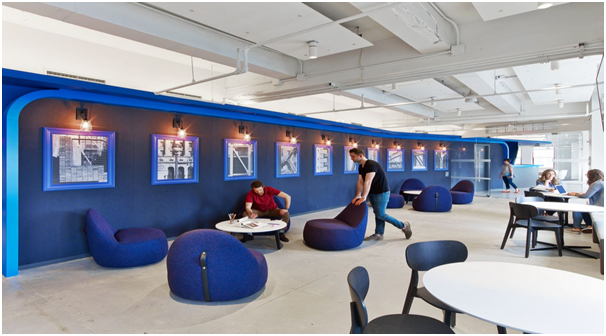Creative Solutions for Sustainable Waste Management
Key Takeaways:
- Utilizing innovative waste management practices can significantly mitigate environmental harm.
- Community involvement and education are essential elements of sustainable waste management.
- Technological progress and policy frameworks are critical for advancing waste management practices.
Introduction
The exponential rise in population and consumerism has placed unprecedented pressure on waste management systems in today’s fast-paced world. Traditional waste management methods, primarily relying on landfills and incineration, are outdated and inadequate for handling the vast quantities of waste produced daily. They not only contribute to environmental degradation but also squander potential resources. As societies become more environmentally conscious, the quest for innovative and sustainable waste management solutions has gained momentum. These solutions aim to reduce the volume of waste and transform it into viable resources, thus establishing a more sustainable cycle of consumption and disposal. This growing necessity fuels the continuous exploration and implementation of creative solutions to enhance sustainable waste management practices globally.
Innovative Waste Management Techniques
At the forefront of these innovative techniques is the nitrogen-reducing septic system. This system is crucial in diminishing wastewater’s ecological impact by lowering the nitrogen levels released. Nitrogen, commonly found in household wastewater, can lead to the proliferation of algal blooms when introduced into aquatic systems, disrupting marine life and water quality. By implementing nitrogen-reducing septic systems, communities can protect these ecosystems while ensuring cleaner wastewater treatment. Additionally, advancements in recycling technologies allow for processing more complex materials previously deemed non-recyclable. Developing biodegradable materials for packaging and other consumer goods further reduces the demand for conventional plastics. These innovations reflect a shift from linear to circular waste management models, where sustainability is a pivotal consideration.
Community Initiatives and Education
The role of community initiatives and education in sustainable waste management cannot be overstated. Local communities can drive significant change by fostering awareness and encouraging sustainable behavior. Educational programs that spotlight the importance of waste reduction, sorting, and proper disposal can empower individuals to change their habits. Community participation is also seen in optimizing commercial septic systems, which handle waste more efficiently and reduce the environmental footprint of local businesses. Involving local stakeholders, including schools, businesses, and residents, creates a shared responsibility for environmental stewardship and strengthens community spirit. Such programs often lead to increased recycling rates and reduced waste generation as individuals feel more accountable and active as ecological caretakers.
The Role of Technology in Waste Management
Technology is revolutionizing the waste management sector by optimizing processes and enhancing efficiency. Innovations such as AI-driven sorting systems can distinguish between different types of recyclables with greater precision than manual sorting, resulting in a higher purity of recycled materials and reducing contamination. Meanwhile, smart waste bins equipped with sensors provide real-time data to waste management services, positing significant savings in collection costs by alerting authorities when bins are full. Blockchain technology is also gaining traction to enhance traceability and accountability within the waste management chain. With its ability to create secure, immutable records, blockchain can ensure proper compliance with waste disposal regulations and foster a transparent waste-handling process.
Policy and Regulatory Frameworks
Effective policy and regulatory frameworks are indispensable to support and guide sustainable waste management practices. Governments play a pivotal role by enacting laws that enforce responsible waste disposal and support recycling and waste minimization strategies. Incentives for businesses to reduce their waste footprint and penalties for violations such as illegal dumping help maintain accountability. Policies that integrate waste management into urban planning strategies can promote cohesive and sustainable community development. Collaborative initiatives between the public and private sectors further these objectives by encouraging innovation and investment in sustainable waste technologies. Such partnerships can result in scalable solutions that address city-specific waste management challenges.
Future Trends in Waste Management
Several trends are expected to shape the waste management landscape as we look towards the future. Incorporating renewable energy sources into waste treatment facilities provides a twofold advantage of minimizing waste and generating energy, aiding in the overarching aim of energy sustainability. The Internet of Things (IoT) will assume a more significant role in waste management, with connected devices delivering extensive data that can enhance waste collection and processing activities. Circular economy models will gain prominence, emphasizing design and production processes prioritizing reuse, refurbishment, and recycling. These trends signal a positive shift towards more efficient and sustainable methods of managing waste, ultimately leading to a more environmentally conscious global society.
Conclusion
In conclusion, sustainable waste management requires a multifaceted approach incorporating innovative techniques, community involvement, technological advancements, and robust regulatory frameworks. By harnessing the capabilities of innovative systems like nitrogen-reducing septic systems, fostering community engagement, and leveraging technology, societies can significantly reduce their waste footprint and safeguard the environment. The combined efforts of people, corporations, and governments are essential to this mission, ensuring that waste transforms into a resource instead of a liability. By maintaining ongoing cooperation and dedication to sustainability, we can create a pathway for a future where waste management strategies enhance our planet’s health and future generations’ welfare.











